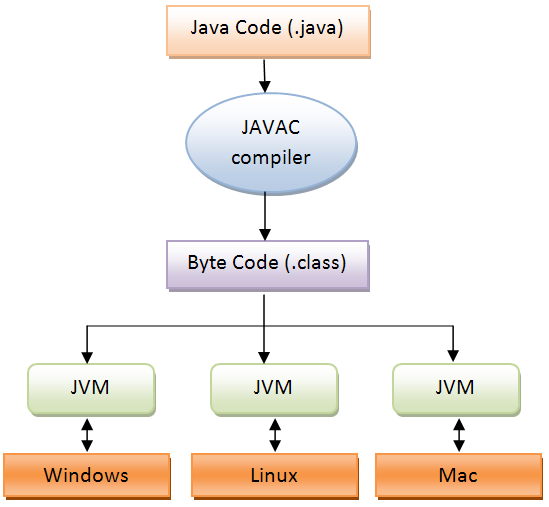|
Java Is a Platform-Independent Language.
Java code is compiled by the compiler and converted into bytecode, which is interpreted by the Java Virtual Machine (JVM) on whichever platform it is being run on. This bytecode is a platform-independent code because it can be run on multiple platforms like Windows, Linux, Sun Solaris, Mac/OS, etc. |

|
Java Is an Interpreted Language.
Java bytecode is translated on the fly to native machine instructions and is not stored anywhere. The development process is more rapid and analytical since the linking is an incremental and light-weight process.
Java Is a Multithreaded Language.
With Java’s multithreaded feature it is possible to write programs that can perform many tasks simultaneously. The main advantage of multi-threading is that it does not occupy memory for each thread. It shares a common memory area.
Java Is a Dynamic Language.
Java is a dynamic language. It supports dynamic loading of classes. It means classes are loaded on demand. It also supports functions from its native languages, i.e., C and C++.
Java Is a Distributed Language.
Java is distributed because it facilitates users to create distributed applications in Java. RMI and EJB are used for creating distributed applications. This feature of Java makes us able to access files by calling the methods from any machine on the Internet.
| It takes two to tango. |